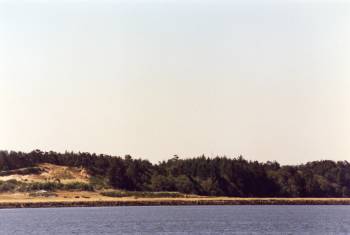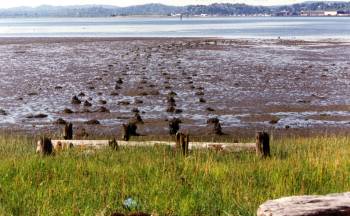The Present
In June 1995 Ed and I spent part of our vacation in Oregon
searching for Jepsons. We spent several
days in North Bend and exploring the Coos Bay region.
The only trace of Peter Jepson or his family we found at North
Bend was in the 1870 Federal Census.
There were no other written records. Peter
did not marry there. No one in his family
died there so there are no cemetery records. Although
four children were born in North
Bend, birth certificates were not required yet. It
was a company town so Peter did not purchase property.
Much of our time, then, was spent in just getting
a feel for the area and trying to see what he and his family saw when
they
lived there.
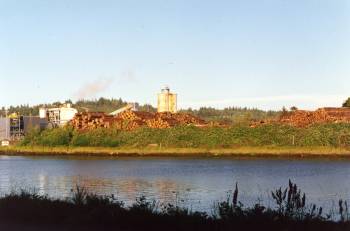 |
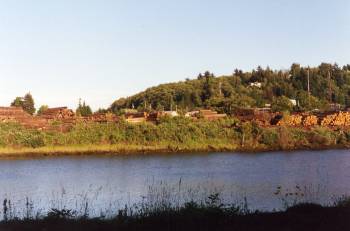 |

We
saw piles of logs several other places along the shores of the bay.
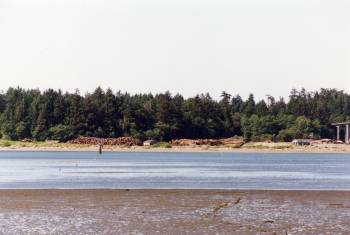 |
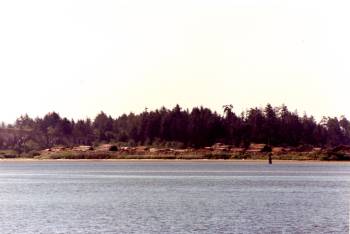 |
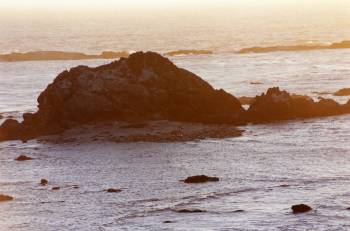 |
|
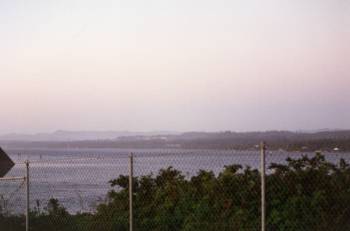 |
|
At the mouth of the bay we saw jagged rocks where seals like to rest in
the evenings. But there weren’t any at the time this picture
was taken. |
Here was
another
view of the coastline at the mouth of the bay. |
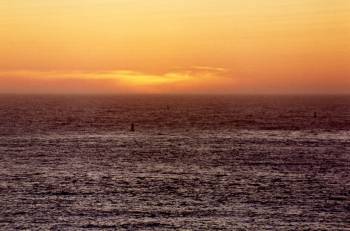 |
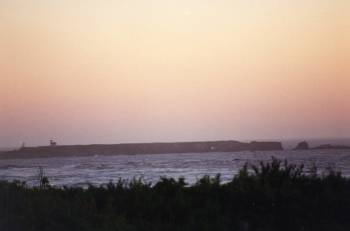 |
|
|
|
Looking
across to the south we could see the bar that goes across the mouth of
the bay. That "bump" on the right is the lighthouse at Cape Arago. |
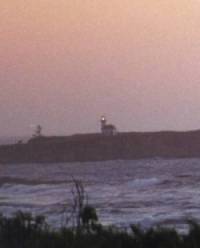 |
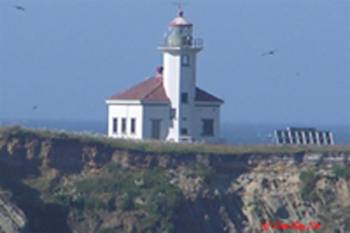 |
|
|
Here is
a closer look at that |
And here is another view taken by a much better photographer. |
In
our search to find a spot where we could take a picture like the one of
North
Bend back in the days when the Peter Jepson family lived there, we went
across
the bay. This was one view we found
from a street above the shoreline. The
area is all residential now, something I’m sure Peter would never have
imagined
would happen.
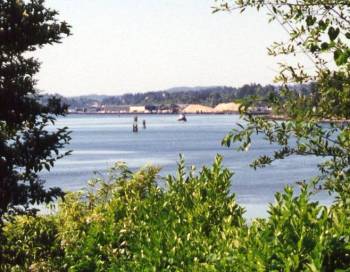 |
|
|
|
But the skyline does not
look quite right. |
Maybe this was it....
but
there are no buildings here. |
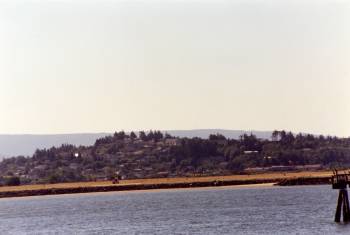 |
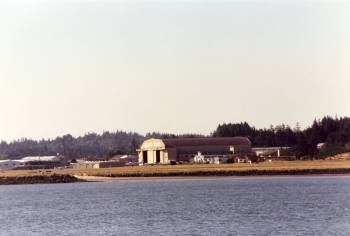 |
|
|
This is North Bend but we
were a little higher up when we took this picture than the photo-
grapher of that old one. |
We did
find the North Bend Airport. |
The tide was out at the time we were taking pictures of North Bend from across the bay. We saw these stubs of wood posts in the mud flat and wondered what they were. An elderly resident of the area told us that back before the bridge was built one could cross the bay on the ferry. Those stubs of wood are the remains of pilings of the old pier where the ferry would dock.
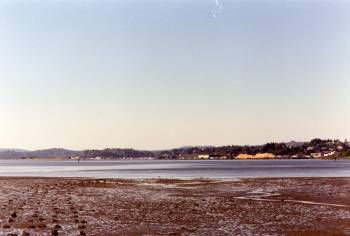 |
|
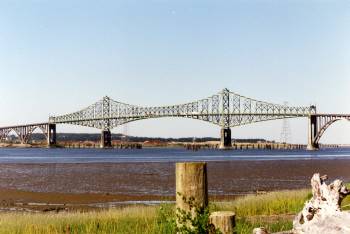 |
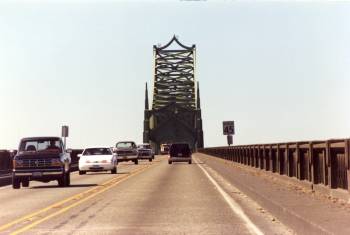 |
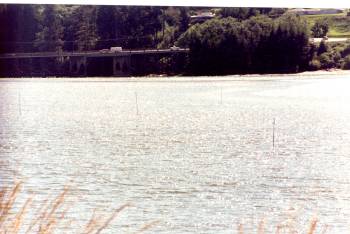 |
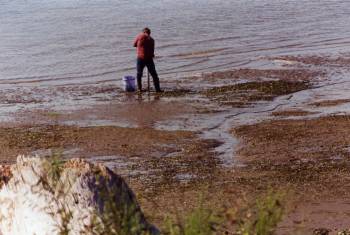 |
|
|
With the sun shining on the
water, it was not
always easy to see the sticks marking the oyster beds. |
Digging for clams, however, is probably more
of a personal hobby than a commercial venture. |
The description of Coos Bay in the early days tells of the Blue Mountains which surround the bay to the north and east and appear to come down to the water's edge. It is, indeed, a beautiful view.
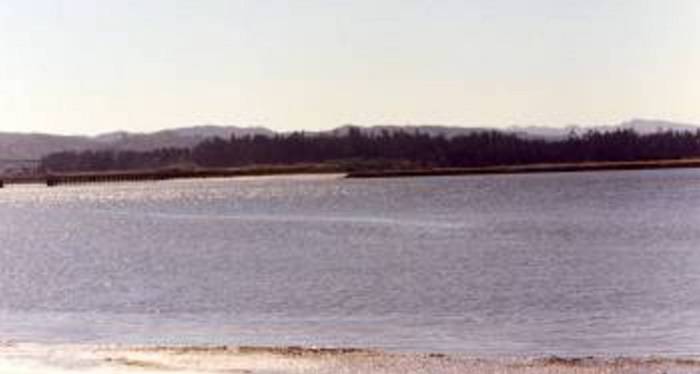
HOME
